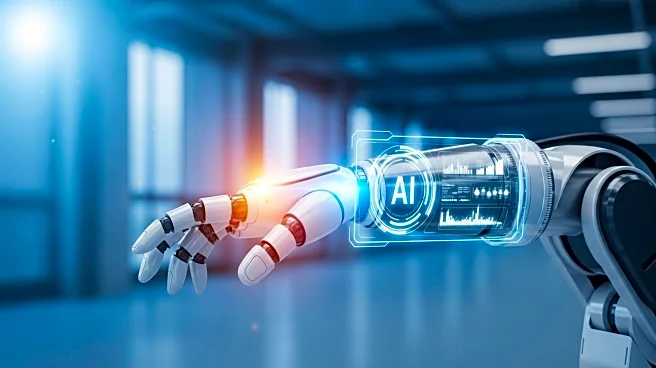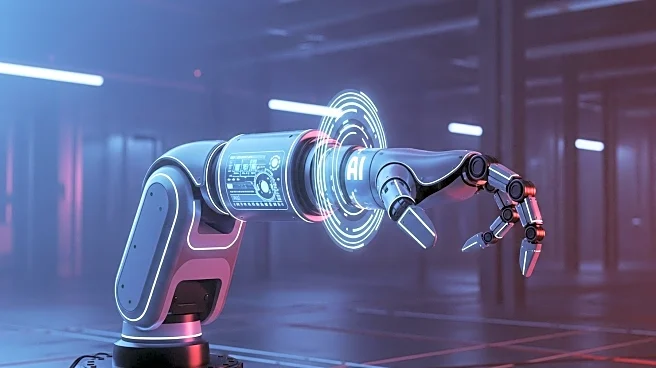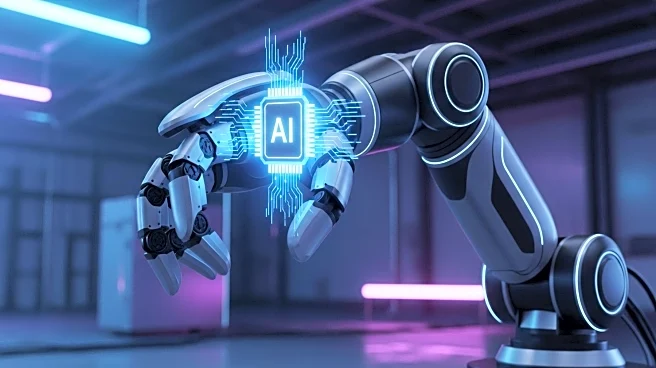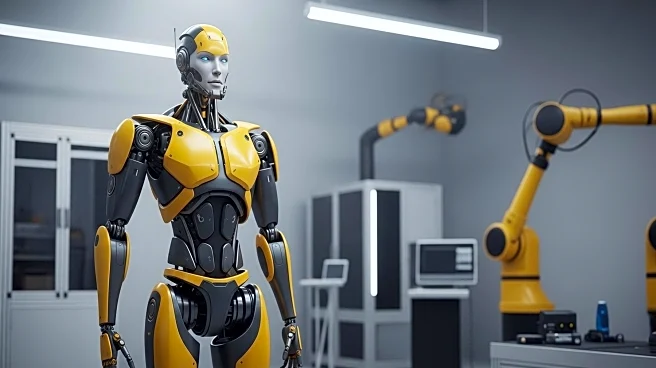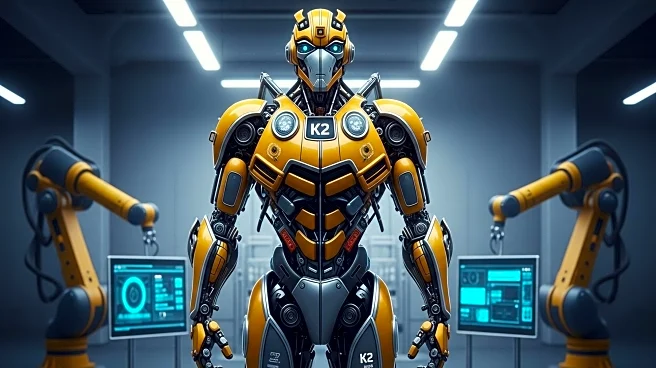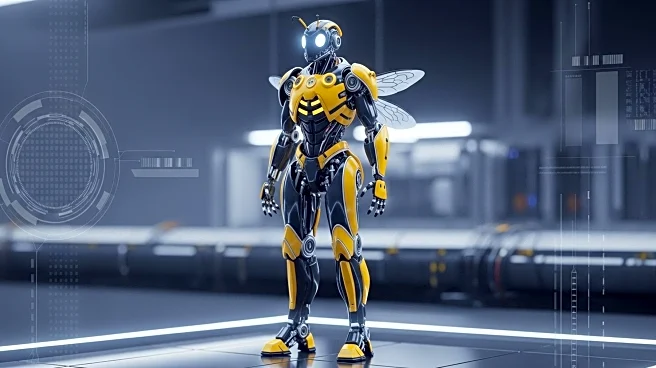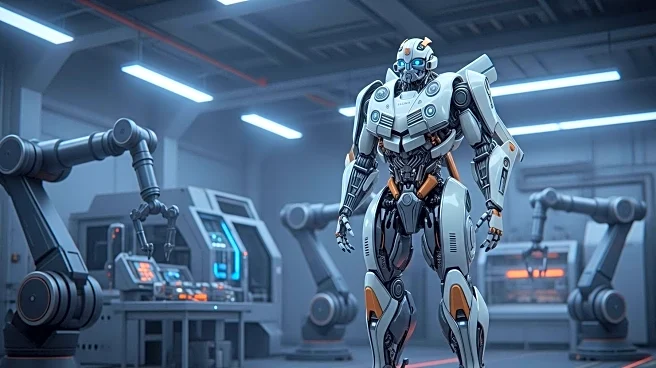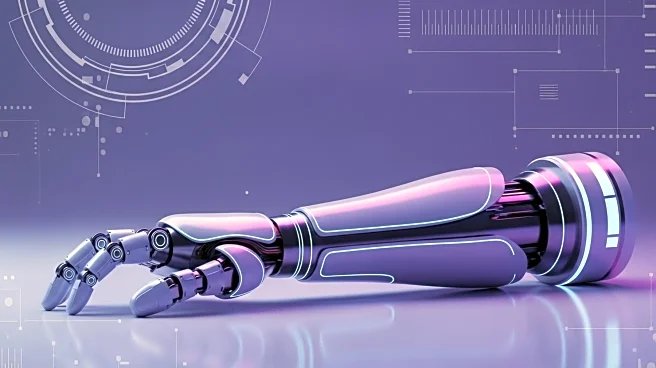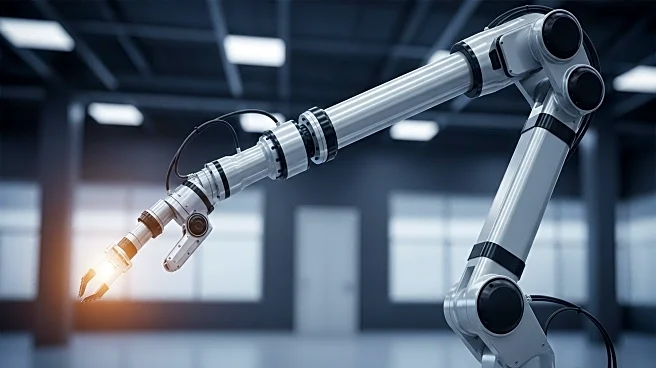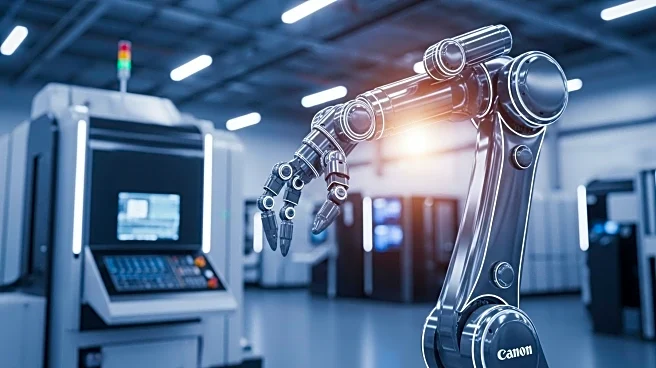What's Happening?
ABB Robotics has integrated a generative AI assistant into its RobotStudio Suite, a move aimed at simplifying robot programming and making it more accessible. The RobotStudio AI Assistant leverages a Large Language Model (LLM) to interpret human language, providing users with context-rich responses drawn from ABB's extensive library of manuals and documentation. This development is part of ABB's ongoing efforts to innovate in the field of AI, enhancing robot versatility and expanding their use beyond traditional manufacturing settings. The AI assistant is designed to address the challenges of a shortage of specialist skills and the need for faster commissioning cycles, making robot programming more approachable for less experienced users while also aiding experts in solving technical challenges more efficiently.
Why It's Important?
The introduction of the AI assistant in RobotStudio is significant as it democratizes access to advanced robotic programming tools, particularly benefiting smaller businesses and new sectors that lack the expertise to adopt robotic automation. By making these tools more accessible, ABB is fostering a broader adoption of robotics, which can lead to increased productivity and efficiency across various industries. This move also supports the development of skills in students and early-career professionals, preparing a new generation of workers for the demands of a technology-driven job market. The AI assistant's ability to facilitate real-time collaboration and optimize automated processes further underscores its potential to transform how businesses operate, reducing energy use and waste while enhancing productivity.
What's Next?
With the AI assistant now included in the RobotStudio premium subscription at no additional cost, ABB is likely to see increased adoption of its software across diverse sectors. The company’s vision for 'Autonomous Versatile Robotics' (AVR) suggests a future where robots can autonomously plan and execute a wide range of tasks, moving beyond fixed operating procedures. This could lead to further innovations in robotic technology, potentially reshaping industries by enabling more flexible and independent robotic systems. As businesses and educational institutions integrate these tools, the demand for skilled professionals in AI and robotics is expected to grow, influencing educational curricula and workforce development strategies.

